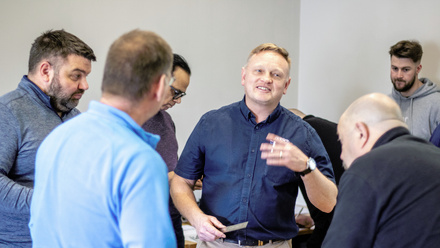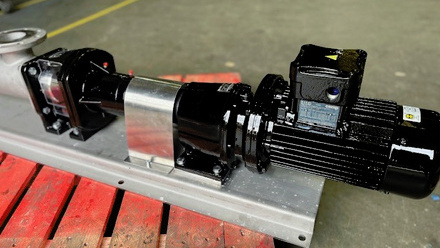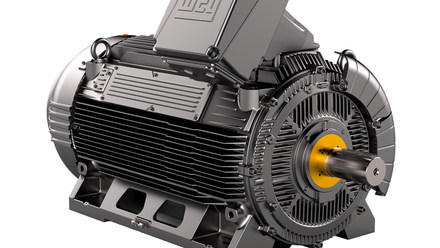The broad outline is included on the Ex Register of companies that are members of the AEMT and have used the AEMT courses to be able to repair Hazardous Area equipment. As well as these the association has trained other international oil and chemical companies and equipment manufacturers.
Training:
The first step to being able to service and repair Ex equipment to IECEx standards is to be trained to repair the equipment using the latest BS EN and IEC 60079:19 Repair Standard for Explosive Atmospheres: Equipment repair, overhaul, and reclamation (currently in iteration 2011 + A1:2015). This was originally developed from the AEMT BEAMA Code of Practice on Hazardous Area equipment repair. The standard has now been broadened to include the repair of all electrical equipment including some instrumentation, and mechanical equipment, which is included in the ATEX Directives.
The people requiring ex training (outlined in this video) are most importantly the manager(s) or supervisor(s) responsible for overseeing the repair of hazardous area equipment. These would be delegated as the “responsible person(s)” and able to oversee repairs and give full support to the “operatives” carrying out any overhaul or repairs. They can also verify that the equipment has undergone a detailed inspection during repair, to ensure that it conforms to the original certificate and standards after repair. This declaration is also signed by the operative responsible for the repair and verified by a responsible person.
“Operatives” (as they are referred to in the standard) are those people repairing hazardous area equipment. They should also attend the Ex courses.
AEMT Certificates are issued to those passing the course assessments. Proof of successful training, knowledge, and at least 3 years experience is necessary to prove competence.
Very comprehensive Course notes are provided on the course explaining in detail the latest IEC 60079 19:2019 standard requirements. The AEMT is actively represented on the IEC and IECEx standards committees. The course notes are continuously updated to include any changes in the standards or Ex repair system requirements. They also now include details on pump repair, and ATEX mechanical concepts for fans and gearboxes etc.
Quality System:
It will help a great deal if your company has a quality control system such as ISO9001:2008/2015, which many already have. This will need some modifications as stated on the IECEx website at http://www.iecex.com/service_facilities.htm with regard to repairing equipment to the above standard. The quality system also requires that your equipment is properly identified and calibrated. Quality System Requirements for IECEx Repair Workshops should also comply with OD314-5. Some auditors are now moving on to ISO/IEC 80079 34: 2011 standard: Explosive atmospheres: Application of quality systems for equipment manufacture.
Equipment:
The equipment required for Ex repairs is outlined in detail on this webpage.
Tools and equipment must be suitable for the sizes of motors seen for service and repair. A library of certificates and Ex standards will be required to cover the protection concepts of the machines being repaired, so that it can be brought back to the standards it was originally manufactured to (covered in detail during the course).
Repair practice and systems.
Having attended the course, the company is able to put in the required systems, and paperwork in place to record Hazardous Area equipment repair.
This builds up a history of using the AEMT repair forms for each protection concept, what standards have been used to repair machines, and measurements taken before and after repair to meet the standards. These records are kept for a minimum of 10 years. Areas of the workshop will need to be identified for conforming and non-conforming equipment. This forms the basis of the repair system, together with the guidance documents downloaded from the IECEx website. In particular those operational documents (“OD’s”) ending in “5” and IECEx 3-5.
Audit, Assessment, AND Certification
Once a good record of repairs has been built up to the above standard, the company can apply to a Certification Body to be audited. This will require a comprehensive manual on how your facility has incorporated the 60079-19 standard into your workshop procedures.
Relevant IECEx operational documents, which can be downloaded from the IECEx Website: http://www.iecex.com/operational.htm
There are a number of operational documents available from the IECEx Web site, however these will be much better understood once the manager/supervisors of the workshop have attended the training courses.
Other standards to be used in conjunction with the above include:
-
BS EN and IEC 60079 19 A1 +2015 Explosive Atmospheres: Equipment repair, overhaul and reclamation.
-
ISO 9001: 2015 Quality Management System – Requirements.
-
ISO/IEC 80079 34: 2011 : Explosive atmospheres: Application of quality systems for equipment manufacture.
-
Other IECEx documents available from the IECEx website IECEx 03-5, IECEx OD313-5, OD314-5, and OD315-5, OD316-5, all available from the IECEx website as above.
Once it is in a position for a preliminary audit, the audit and certification will be carried out by a local service centre. In the UK the certification body the AEMT works closely with is SGS Baseefa (details below). But for other locations, please consult the following list of IEC Ex Certification Bodies (IECEx CB):
Tel: 01298 766 619 SGS Websites: www.baseefa.com and http://www.baseefa.com/iecex-service-facility-certification
SGS Baseefa is a certification body and a member of the AEMT. They have carried out many workshop audits. As per ISO 17025 the audit company should not be involved in the training of the facility that they are auditing.
The procedure to obtain a successful audit may take up to a year to complete once the company has completed any training required. It needs to build up a good history of repairs and procedures for the auditor to check, and overcome any non-compliances. It is similar to an ISO9001 audit (although some companies have achieved success in around 6 months).




